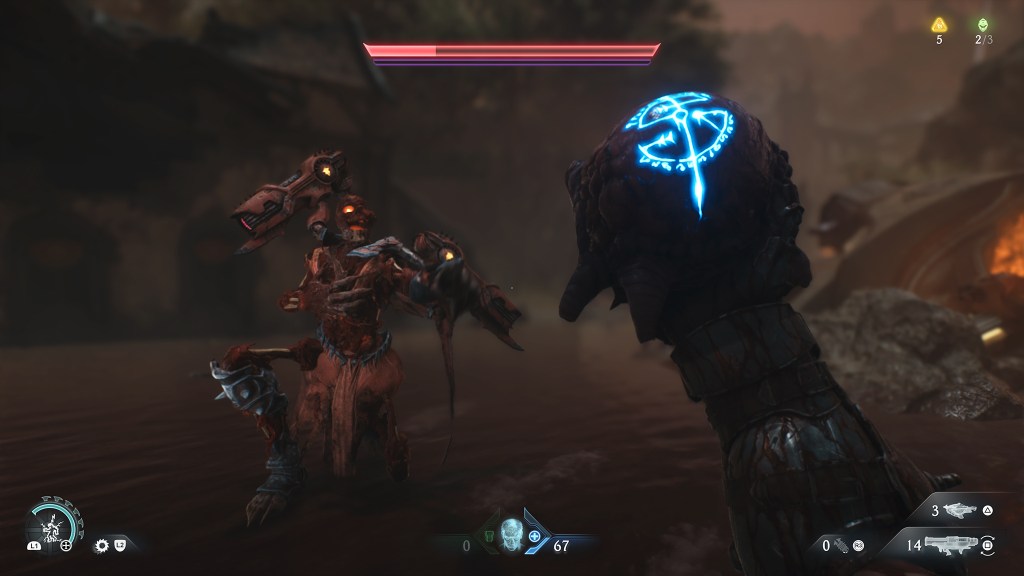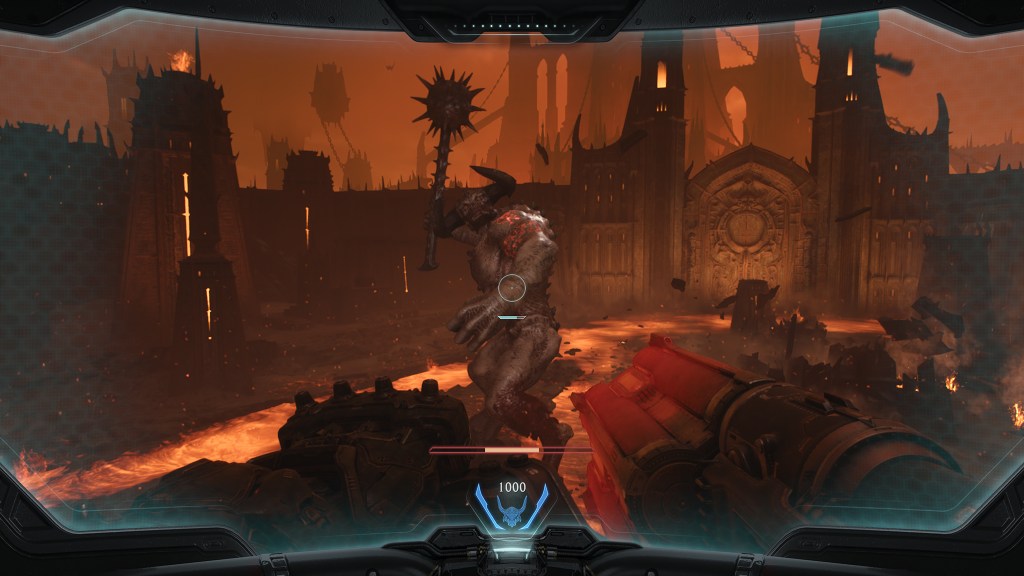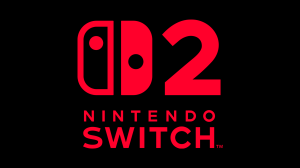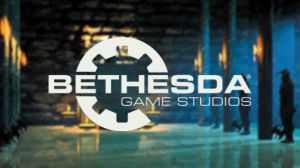The legendary Doom Slayer has felled Satan and thousands of his greatest minions, ones carrying more primal hatred and lethality than hundreds of undamned souls. Heroic feats like this, though, are only bested by his ability to morph and stay relevant after nearly birthing a genre — or at least heavily popularizing it — over three decades ago. DOOM: The Dark Ages carries on that tradition by being a soft reinvention of the bloodthirsty franchise. It’s a unique sequel, as it both reframes DOOM’s core strengths while also demonstrating some of the issues that come with constant refreshes.
Videos by ComicBook.com
The Dark Ages differs from earlier entries because of how grounded it is. The Doom Slayer can no longer flutter around and air dash between monkey bars spread across the battlefield like he could in DOOM Eternal. Instead, developer id Software has taken away his ability to dash, swing around, and double jump and replaced those moves with a hearty, chainsaw-infused shield. He’s less Spider-Man and more Captain America now, albeit with a significantly more insatiable penchant for fatal bloodshed.

The shield is a microcosm that represents the conflict central to The Dark Ages’ core. It is rewarding to toss out the spinning disc, bisect a few grunts for some easy loot drops, catch it just in time to parry a raging Hell Knight, and then dash 20 feet to bash the hell out of an unsuspecting Imp in the span of just a few seconds. The booming sound design that clangs with every parry and the array of particle effects ensure that players see and feel each one, and those aural cues (along with the obvious, bright green visual cues) are essential for a mechanic this foundational.
There are tangible benefits of the shield. Weaving through bullet patterns to just barely deflect the lone green fireball adds small doses of the tension found in bullet hell shoot-em-ups, and parrying back-to-back uniquely timed melee blows recalls some of the more tense encounters in Sekiro: Shadows Die Twice and Lies of P. It’s an offensive defense that cleverly gets around how effective circle strafing has been in the past by forcing players to engage with a flurry of unique bullet patterns or aggressive close-quarters foes.
RELATED: New Doom: The Dark Ages Trailer Violently Rips and Tears Through New Foes
Chaining all these moves together to carve out a path of unbroken destruction is a rewarding journey since it requires learning new skills that aren’t just carryovers from DOOM Eternal or the 2016 reboot. Knowing when to shield bash and when to bonk a demon with the new resource-yielding melee weapons requires a different kind of timing, after all, and getting faster and more efficient evokes a murderous flow state that few games can attain. And this constantly evolves through the campaign as it skillfully paces out its cavalcade of upgrades; there’s always something new to add to your demon-slaying repertoire.

But The Dark Ages’ approach has some shortcomings when compared to the blazing-fast speed of Eternal. Blocking and parrying isn’t as universal of a defensive mechanic as dodging and can sometimes lead to scenarios where getting hit is inevitable since it’s not always possible to disengage from the chaos without a dash. Deemphasizing the mini-Fatality-like Glory Kills also contributes to this notion. Glory Kills in the prior two games were strategic breaks in the action that rewarded disciplined demon hunters with a short breather that also let them gather a bigger abundance of resources. Most can’t be killed with Glory Kills in The Dark Ages, so the tactical dance of damaging a demon just enough to stun them is disappointingly reserved only for bigger baddies. Enough resources spill out no matter how they’re killed, too, and the tougher ones — aside from aerial executions — don’t even have a special kill animation. Simply kicking a massive Cyberdemon is not the fulfilling coup de grâce it should be.
The Dark Ages’ combat loop falters a little when compared to its predecessors, yet it’s still thrilling most of the time and showcases id Software’s finesse making first-person shooters; the team even excels when it’s not doing its best work. However, the main issue is how players have to dig to extract the goods at The Dark Ages’ core. The default settings do not show off the game in the best light and require heavy tinkering with its many accessibility-focused knobs and levers.
Having such forgiving parry timing does not make them feel earned. Almost always having near-maximum amounts of ammo deemphasizes the melee weapons and means players can fall into a predictable trance of using the same weapons and strategies. Slower projectiles and less aggressive adversaries also downplay the shield that is central to the experience. Even the music — which is full of decent, fast-paced metal that’s sadly still not close to the stratospheric highs of Mick Gordon’s iconic electronic-laced compositions — is strangely at a relatively low volume at the outset. It’s welcome to have all sorts of ways to fiddle with everything, but DOOM is at its best when the pressure is high and the beats are thumping, so it’s bizarre to have a collection of unoptimized default settings that don’t highlight those strengths.

Not everything can be improved in the options. The Doom Slayer can also ride a dragon and bipedal mech called an Altan in certain levels, but these alternate demon-killing methods lack the depth of the core combat. Taking down aerial threats with the mechanized winged beast boils down to an overly simple dodging mini-game. The Pacific Rim-esque mech runs into the same issue, albeit with melee mechanics that hardly go beyond dodging slow, green-tinged punches and mashing the attack button. They change up the pace, benefit from the smooth controls at the game’s core, and don’t go on for too long, but DOOM’s shooting mechanics have typically been strong enough to not require distractions like these, and the same is true for The Dark Ages.
The Dark Ages’ narrative isn’t much more than a distraction, too, as it missteps in a few key places. The lack of transitions between some places is usually jarring, and the interesting ideas it poses in the beginning around who controls the Doom Slayer are glossed over in second half when the game introduces its random “chosen one” plot thread for a major side character and pads out its playtime with filler levels with objectives. These stages are almost always gorgeously rendered and take the series to refreshing and remote realms it has not gone to before, but the justification for traveling there isn’t always strong. DOOM doesn’t require a deep, twisty tale, but the 2016 reboot and Eternal showed that it was possible to craft a decent story within the series’ restraints.
DOOM: The Dark Ages is chronologically the first DOOM game in the most recent trilogy, but it also feels like it was developed first. While it’s got rousing gunplay that prioritizes parries and weaponized defense, it’s also got enough fluff — a less tactical Glory Kill system, merely passable vehicle sections, a campaign that meanders near the end — that’s unbecoming for a game that came after two tightly tuned installments. But even with these flaws, id has still crafted an experience that stands tall in an ever-shrinking market of single-player first-person shooters. Even an ever-so-slightly unfocused Super Shotgun blast like this still packs quite a punch.
Rating: 4 out of 5
DOOM: The Dark Ages is available on May 15th for Xbox Series X|S, PlayStation 5, and PC. A review copy for PS5 was provided by the publisher for the purpose of this review.








